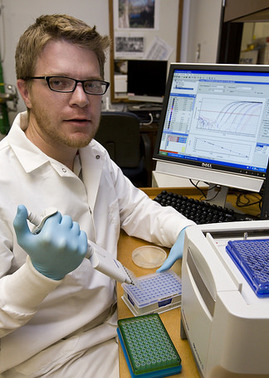 Superheroes really do work among us. But, instead of capes and cowls and ice palaces and caves, they are often found in a lab at a public university or state agriculture department, wearing lab coats and working over a microscope.
These men and women work daily to protect our communities and crops from dangerous pests and pathogens. They are plant pathologists, entomologists, nematologists, weed scientists, and other plant scientists who work diligently to mitigate the impact of endemic, emerging, and exotic pathogens and pests that attack agricultural, forest, and landscape plants in the United States.
We live in a global society where people, food, and materials travel in and out of our country 24 hours a day. In addition to natural introduction of pathogens and pests – such as the hurricane that brought soybean rust to the United States – our ports, highways, and airports are also entryways for new insects and diseases that hop a ride on cargo containers, suitcases, and even travelers’ clothing. Whether it is citrus greening disease (which is spread by the Asian citrus psyllid and threatens citrus production), emerald ash borer (an exotic beetle that has killed millions of ash trees in North America), or purple loosestrife (which invades our wetlands and displaces native vegetation), plants, pests, and pathogens threaten our food and water supply and, potentially, our economic security.
The scientists, engaged with the National Plant Diagnostic Network (NPDN), are on the front lines and protect us from these threats by providing timely and accurate diagnostics.
Continue reading >>
|